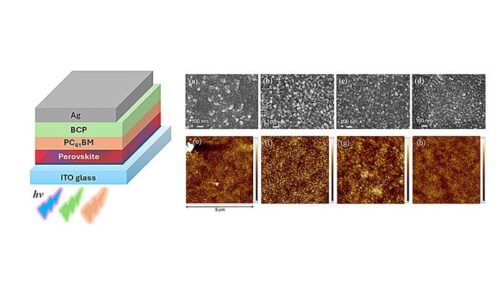The solar cells make power from indoor light. They work on many surfaces and can power small devices even in low or shaded light.

Perovskite solar cells (PeSCs) generate energy from both sunlight and indoor light, such as fluorescent or LED bulbs, unlike regular solar panels that need direct sunlight. Made from a material that forms thin, see-through layers, PeSCs can be applied to various surfaces and shaped more easily than rigid silicon panels. In APL Energy, researchers at National Yang Ming Chiao Tung University in Taiwan developed PeSCs that convert indoor light into electrical power.
A feature of PeSCs is the ability to tune their bandgap—the property that determines which parts of the light spectrum the material can absorb. By adjusting the chemical composition of the perovskite layer, the solar cells can be adapted for different light conditions, especially indoors.
This tunable bandgap helps PeSCs absorb light more effectively from lower-intensity sources, such as indoor lamps or overcast daylight. Silicon cells, with a fixed bandgap, are less effective in dim lighting.
PeSCs have shown strong results under low light, reaching a power conversion efficiency (PCE) of 38.7% at indoor light levels, common in offices. Under sunlight, they reached a PCE of 12.7%, which is close to some silicon-based panels. The manufacturing process allows control over the structure and behavior of each cell. Adjusting the material helps match PeSCs with different electronic devices and use conditions.
To manage defects from bandgap tuning, researchers developed a method to fix imperfections in the perovskite layer. This increases the durability and function of the solar cells without lowering their output.
Due to their indoor efficiency, PeSCs can power small electronics such as remote controls, fitness trackers, sensors, and other IoT devices. Their form factor allows them to fit into devices, curved surfaces, or places where standard solar panels can’t be used—such as windows, bags, or wearables.
Better function across different lighting conditions means these cells can supply steady energy in both bright and dim areas. This supports devices that charge on their own with little need for user action. By combining indoor performance with flexible design, PeSCs support new ways to gather energy in homes, offices, and mobile uses—bringing solar power into more areas of daily life.
Reference: Chelating agent-based defect passivation for enhanced indoor performance of wide-bandgap perovskite solar cells, APL Energy (2025). DOI: 10.1063/5.0260714








